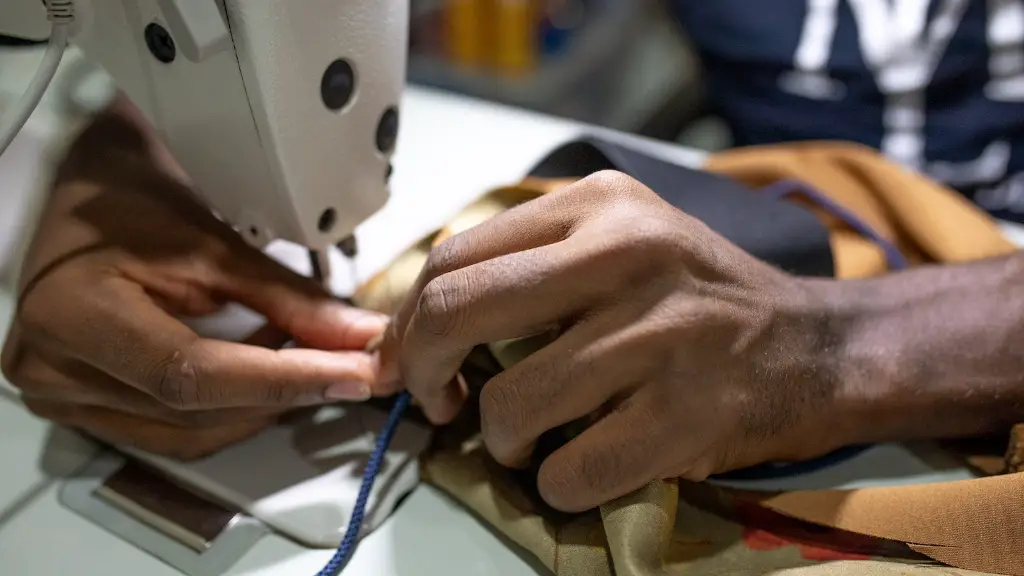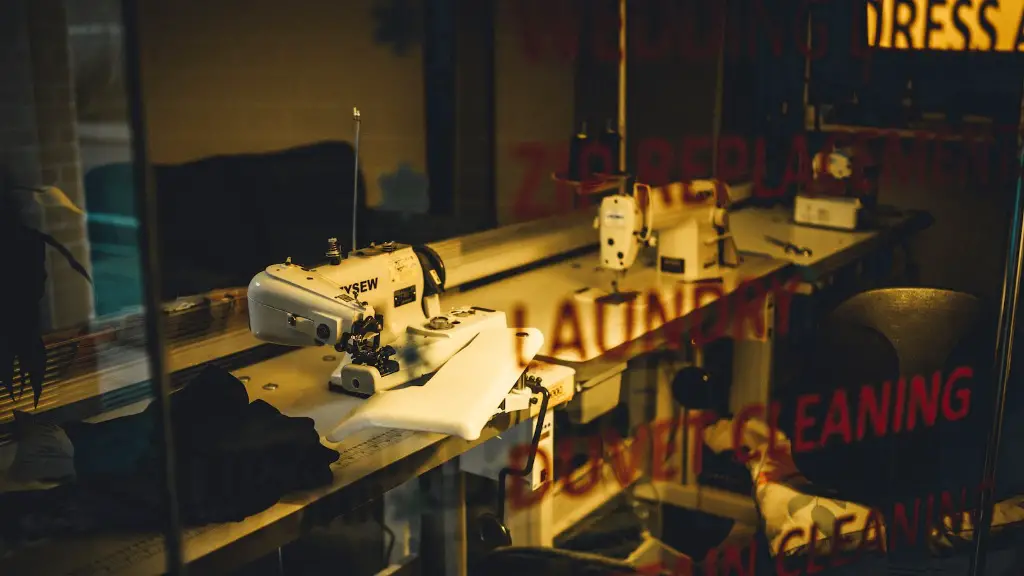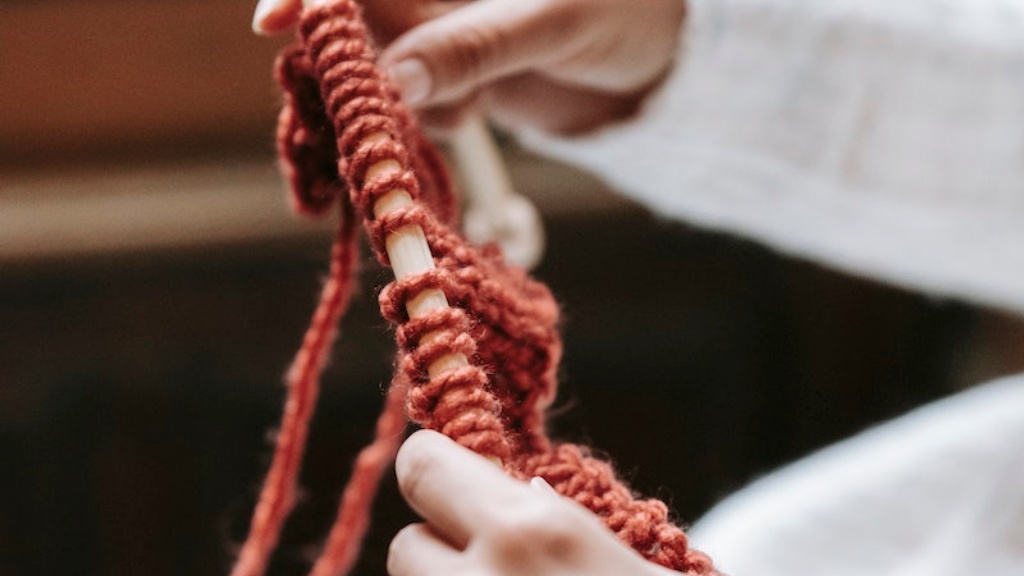Introduction
Handheld sewing machines offer the best of both worlds – the convenience of a portable device and the power to handle big tasks. To get the most out of a handheld sewing machine, one has to first understand how these machines work and how to set them up. With proper setup and use, you can expect great results from your handheld sewing machine. In this article, we will provide an in-depth guide on how to set up a handheld sewing machine to get you started on your sewing projects.
Understanding The Basics
Before jumping into the setup process for a handheld sewing machine, it is important to understand the basics of its construction and how it works. It is important to familiarise yourself with the device if you want to make use of all the features it has to offer.
Handheld sewing machines usually consist of a motor, a bobbin, and a series of gears and wheels. These components move when you turn the machine on and make the stitching process smoother and faster. The motor will drive the gears and wheels, while the bobbin holds the thread. To ensure the stitches are firm and correctly formed, all these components have to work together in harmony.
Personalising Your Machine
Once you understand the basics of the handheld sewing machine, the next step is to personalise it to your needs. Most machines come with different settings, and you should explore them to find the ones that serve your purpose. Some of the more common settings include stitch-widths, speeds, tension, presser foot height, and needle selection.
For example, most machines offer three different stitch-widths for different types of stitching and fabrics. Adjusting the stitch-width allows you to control the type of stitch and how tight it is. Similarly, selecting the correct speed ensures you can finish your projects in a shorter time.
Threading The Bobbin
One of the essential steps in setting up a handheld sewing machine is threading the bobbin. To do this, start by carefully opening the metal housing of the bobbin and loading the thread spool inside. Next, place the bobbin on the spool pin and make sure the thread sits to the right of the machine. Make sure you follow the direction of the arrows indicated on the machine to properly thread the bobbin.
Once the thread is seated correctly, pull both ends of the thread through the bobbin and wrap them tightly around the bobbin. Pass the end of the thread though the eyelet of the needle and secure it through the upper thread mechanism. Now, check if the bobbin is running smoothly and if the thread is properly tensioned.
Installing The Needle
The next step in setting up a handheld sewing machine is to install the needle. First, make sure to select the right size and type of needle for your project. Generally, 12/80 needles are best for light fabrics, such as cotton, while 16/100 needles are best for heavier fabrics, like wool.
Once you have chosen the right needle, secure the needle into the machine carefully. This process is different for most machines, so be sure to refer to your manual for details. Generally, this involves inserting the needle into the needle holder, and using a screwdriver to secure it in place. Make sure the needle is at the proper height and is tight before you start to use it.
Adjusting The Foot Pedal & Selecting The Settings
Most handheld sewing machines come with adjustable foot pedals that allow you to control the stitch length, speed, and more. To adjust the foot pedal, simply rotate the dial near the foot pedal to the desired settings. For example, you can use the dial to increase or decrease the speed of stitching, or even to select reverse stitching.
Finally, select the required settings for your fabric and project on the machine’s display panel. You can choose from a variety of stitch patterns, including straight and zigzag, as well as select the recommended tension settings. Be sure to consult the machine’s manual for any settings that you do not understand.
Testing The Setup
Once you have completed the setup process, it is time to test your machine. If you are unsure of what to do, start with a simple test piece of fabric. Attach the fabric to the machine and start with a small stitch pattern at a low speed. If the stitching is successful, increase the speed and settings until you find the perfect combination for your fabric and project.
Once you are satisfied with the results, you can start using the machine for your projects. With a good quality, well-maintained machine, expect smooth stitching and crisp edges for all your stitching projects.
Types Of Stitch Patterns
Handheld sewing machines offer a wide range of stitch patterns that you can use to add character and detail to your projects. From the classic straight lines to intricate patterns and symbols, you can create almost anything with a handheld sewing machine.
Common stitch patterns include the running stitch, backstitch, zigzag, and herringbone. To ensure your stitching looks as neat and professional as possible, start practising on an old piece of fabric before you move on to your project.
Care And Maintenance
Handheld sewing machines, like any other type of machine, require regular maintenance to ensure they continue to perform optimally.
To keep your machine in good condition, always remember to clean it after use, oil the moving parts, and store it somewhere safe. Additionally, take the time to inspect the machine for any signs of wear and tear before you start a new project. This will help you spot any loose parts or missing components and prevent permanent damage to the machine.
Troubleshooting
If you ever experience any difficulties with your handheld sewing machine, the first thing to do is to consult the user manual. It is important to understand how the machine works and look for any instructions related to common problems.
Another great way to troubleshoot your machine is to seek help from a qualified mechanic. Most sewing machine shops provide a service where they can inspect and fix your machine, if necessary. Furthermore, they may also offer advice on how to properly care and maintain your machine.
Replacement Parts & Accessories
Your handheld sewing machine is only as good as the parts and accessories you use. Without the right parts and accessories, your machine might not be able to perform up to its full capacity.
When selecting parts and accessories for your handheld sewing machine, always make sure to only purchase items that are compatible with your machine. This means double-checking the specifications of the parts and accessories before making a purchase. Additionally, also make sure to purchase genuine replacement parts for your machine; using fake parts can lead to irreparable damage.
Advanced Techniques To Improve Efficiency
Once you have mastered the basics of a handheld sewing machine, you can start experimenting with advanced techniques to improve your stitching efficiency.
One effective way to make your stitching quicker and easier is to use a hoop to hold your fabric. This plastic or metal hoop attaches firmly to the fabric and holds it in place so you don’t have to constantly adjust it with your hands. Additionally, using a presser foot can help you get even and consistent stitches for your project.
Conclusion
Setting up a handheld sewing machine may take a bit of effort, but by following the guidelines outlined in this article, you can expect great results from your machine. With a well-maintained, correctly setup machine, you can easily finish your projects – from basic hemming to intricate embroidery designs. So, do not hesitate to give handheld sewing machines a try!



